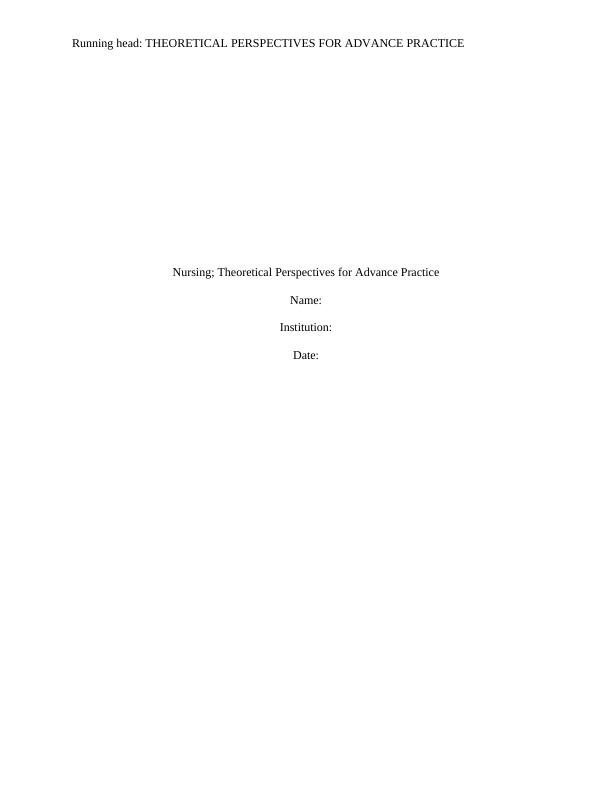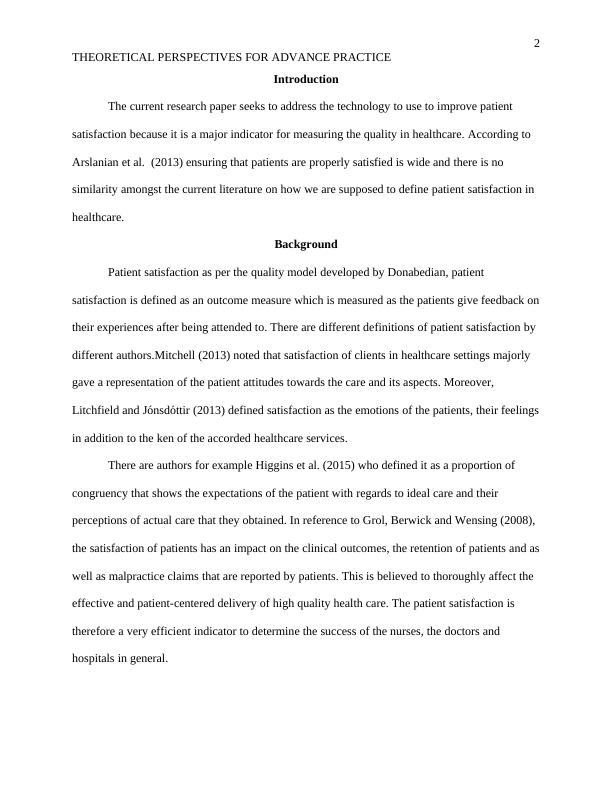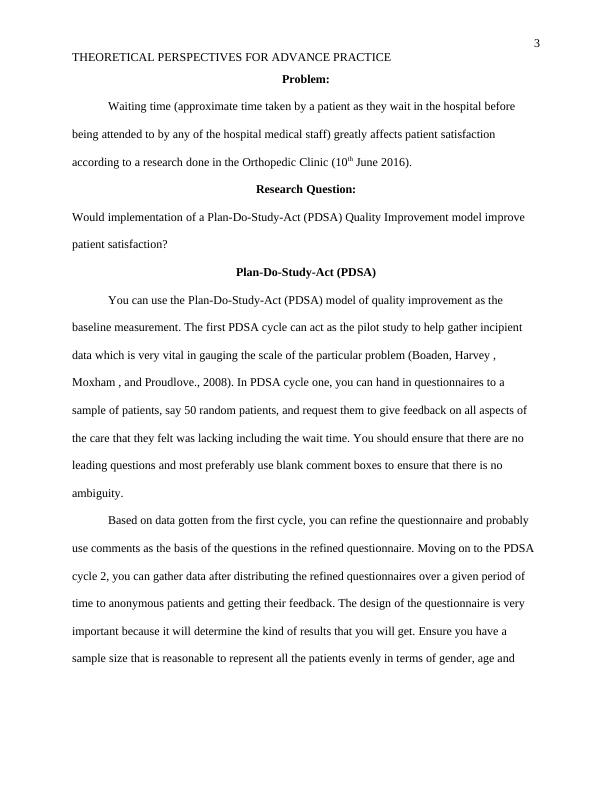Theoretical Perspectives for Advance Practice Assignment
Added on 2021-05-31
7 Pages1412 Words25 Views
End of preview
Want to access all the pages? Upload your documents or become a member.
Pressure Injury Research Paper 2022
|14
|3450
|48
Data Analysis And Quality Improvement Research
|4
|603
|40
Nursing Practice Development: Use of Cultural Indicators for Quality Care
|12
|3352
|53
Development of QHS Operational Plan
|11
|2412
|28
Pressure Injury as a Quality Indicator: Literature Review and PDSA Cycle
|14
|3585
|218
Effective Service Improvement Strategy for Pressure Ulcer Prevention and Management in Elderly Patients
|26
|4592
|143



